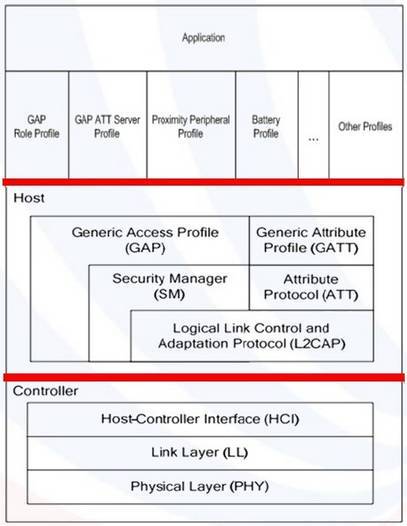
Bluetooth technology has become an integral part of our connected world, and at its core lies the Host Controller Interface (HCI) protocol. This article serves as an introductory guide to the Bluetooth protocol of the HCI architecture, explaining its role, functionality, and importance in Bluetooth communication.
Understanding the HCI Protocol
The HCI protocol is a key component of the Bluetooth architecture, acting as the communication link between the host device (such as a computer or smartphone) and the Bluetooth device (like a headset or speaker). It defines the commands, events, and data packets that facilitate the exchange of information between these two components.
Key Elements of the HCI Protocol
- Command Packets: These are issued by the host to configure and control the Bluetooth device, such as initiating a connection or changing settings.
- Event Packets: Generated by the Bluetooth device, these packets inform the host of significant occurrences, like connection establishment or disconnection.
- ACL Data Packets: Asynchronous Connection-Less packets are used for data transmission that does not require a continuous connection, such as file transfers.
- SCO Data Packets: Synchronous Connection-Oriented packets are used for isochronous data, typically for voice transmission in headsets.
- Control and Status Information: Provides vital status updates and control information to ensure smooth operation.
Functionality of the HCI Protocol
The HCI protocol enables several critical functionalities:
- Device Discovery: Allows the host to scan for and identify available Bluetooth devices.
- Connection Management: Facilitates the creation, maintenance, and termination of connections between devices.
- Data Transfer: Manages the transmission of data between connected devices efficiently.
- Error Handling: Provides mechanisms to detect and respond to errors during communication.
HCI Architecture and Protocol Layers
The HCI protocol operates within the bottom two layers of the Bluetooth protocol stack:
- Physical Layer: Manages the actual radio frequency communication.
- Link Layer: Ensures reliable transmission of data between devices, including error correction and flow control.
The HCI protocol itself sits atop these layers, providing the interface for higher-level protocols and applications.
Applications of the HCI Protocol
The HCI protocol is essential in a wide range of Bluetooth applications:
- Audio Streaming: For wireless headphones and speakers to stream high-quality audio.
- Data Transfer: Enabling the transfer of files and information between devices.
- Device Networking: Supporting the creation of personal area networks for multiple devices.
- IoT Connectivity: Allowing IoT devices to communicate with each other and the internet.
Challenges and Considerations
Implementing the HCI protocol requires attention to:
- Compatibility: Ensuring that devices adhere to the Bluetooth specification for seamless interoperability.
- Security: Implementing encryption and authentication to protect against unauthorized access and data breaches.
- Power Management: Designing the HCI interface to minimize power consumption, especially for battery-powered devices.
Strategies for Effective HCI Utilization
- Compliance with Standards: Adhere to the Bluetooth SIG standards for reliable and secure communication.
- Robust Software Stack: Develop or integrate a comprehensive software stack that supports the HCI protocol effectively.
- Testing and Optimization: Rigorously test the HCI implementation to optimize performance and troubleshoot issues.
Conclusion
The HCI protocol is the backbone of Bluetooth communication, providing a standardized method for data exchange between devices. By understanding the architecture and functionality of the HCI protocol, developers can harness its power to create innovative Bluetooth-enabled products and solutions. As Bluetooth technology continues to evolve, the HCI protocol will remain a fundamental component, driving the development of future wireless communication technologies.
As a professional manufacturer of low power Bluetooth module, Tecksay has independently developed and produced a number of BLE Bluetooth modules that have been applied to many industries. With more than ten years of industry experience, Tecksay can customize BLE embedded solutions for customers from design, project management, function customization, system development and other aspects.



